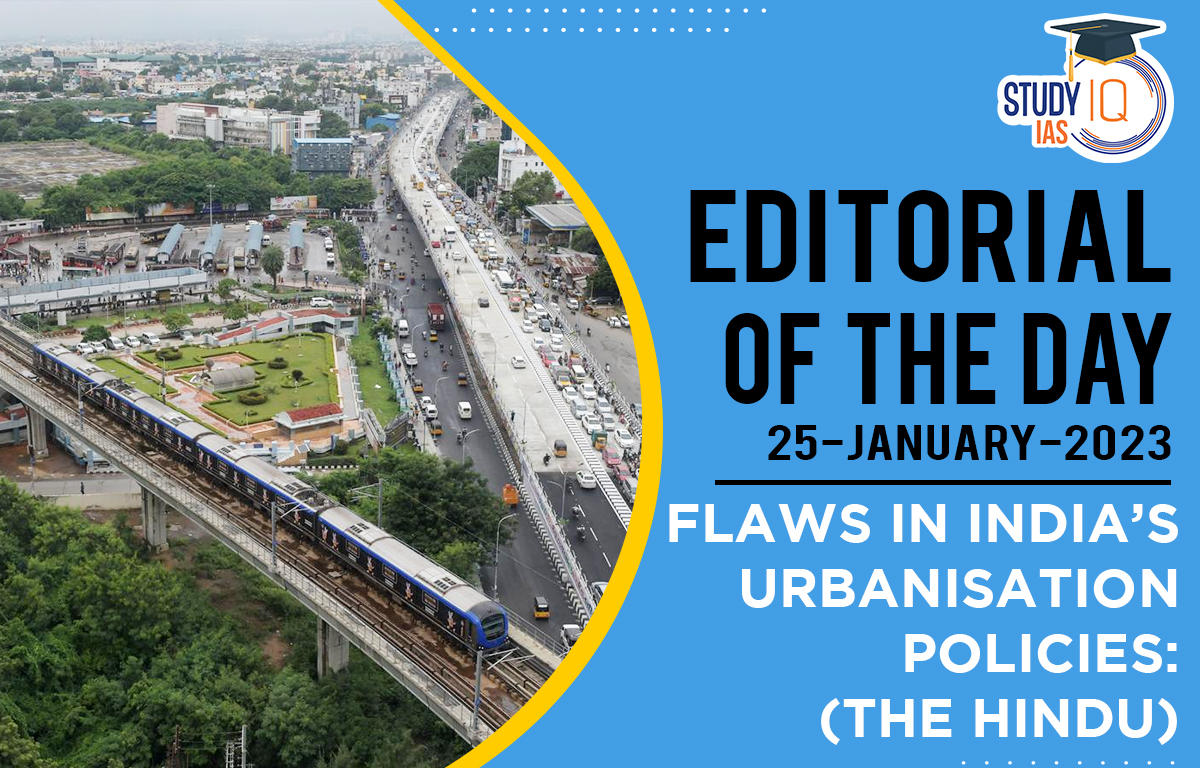Table of Contents
Context of the Article: The World Bank released a report on urban financing for India. The author writes about the issue related to urban finance and urban infrastructure in India.
Author’s Views
- Financial contribution: Out of the total finances needed to fund urban capital expenditures, 48%, 24%, and 15% are derived from the central, State, and city governments
- Public-Private partnership projects only contribute 3% and commercial debt 2%.
World Bank Estimates on Urban Financing: A Brief Outline
- According to World Bank, nearly $840 billion would be needed for investment in urban India to meet the growing demands of the population, and $55 billion would be required annually.
- The flagship programs of the government, the Smart City mission, the Atal Mission for Rejuvenation and Urban Transformation (AMRUT), the Pradhan Mantri Awas Yojana (PMAY), etc., are not more than Rs 2 lakh crore (for a period of five years).
- Suggestions: The core idea of the report and the solutions suggested include improving the fiscal base and creditworthiness of the Indian cities by increasing the property taxes, user fees, and service charges.
- Cities must institute a buoyant revenue base and be able to recover the cost of providing its services.
- World Bank report’s emphasis is on the levying of more burdens in the form of user charges on utilities, etc.
Alternative Path Suggested by the Author
- Identifying people’s needs: The basic problem with this report is that this is made using a top to bottom approach, with too much of a focus on techno-centric solutions using very high capital-intensive technologies.
- For the urban context, plans must be made from below by engaging with the people and identifying their needs.
- Implementing C. Sivaramakrishnan committee suggestion on 74th CAA: This includes empowering the people, transferring subjects to the city governments, giving back 10% of the income tax collected from cities, and ensuring that this corpus fund was utilized only for infrastructure building.
- 3 Fs of Urban Governance: Regular elections should be held in cities and there must be empowerment through the transferring of the three Fs: finances, functions, and functionaries.
Case Study – Shimla Water Story
- The Shimla water works was transformed into a single utility in 2016-17, called the Greater Shimla Water Supply and Sewage Circle (GSWSSC) under the Shimla Municipal Corporation.
- The Bank rendered help in the form of a soft loan, ensuring an adequate supply of water and proper distribution by the utility, but under the Shimla Municipal Corporation.
Conclusion
- An improved urban legal framework that includes a stable and certain fiscal transfer regime, and accords financial powers to ULBs [urban local bodies] along with attendant rules/regulations will determine the medium- to the long-term scale of investment flows for urban infrastructure.


 Current Affairs 19th April 2024 for UPSC...
Current Affairs 19th April 2024 for UPSC...
 Private investment, Trend in India, and ...
Private investment, Trend in India, and ...
 Maoist Insurgency, Current Scenario and ...
Maoist Insurgency, Current Scenario and ...

















